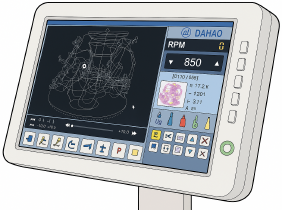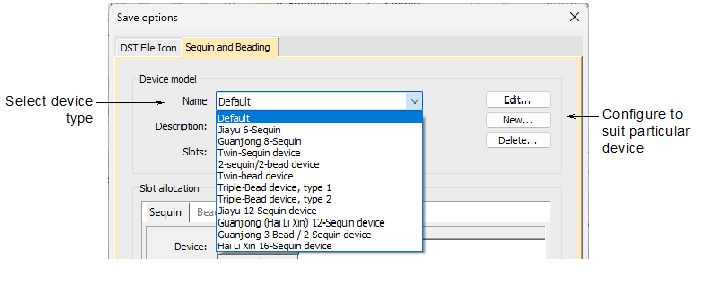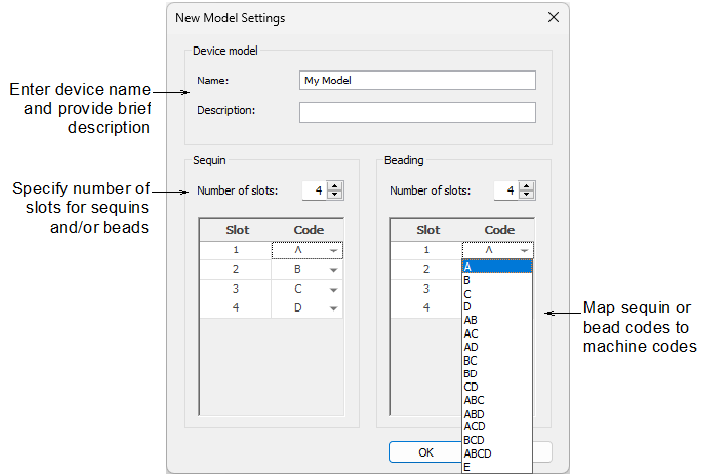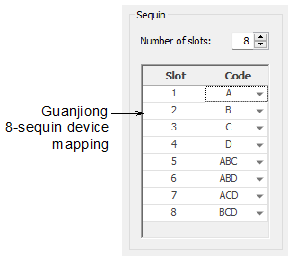
Si su diseño usa el formato de máquina Dahao, el archivo de máquina DST usa un protocolo modificado para un uso no estándar de los códigos de Salto. Este formato también lo usan controladores compatibles. Los controladores usan sus propias combinaciones de código para nombrar ranuras en el dispositivo. Las reglas de asignación puede estar especificadas por el fabricante del dispositivo. Alternativamente, puede requerir algo de prueba y error con muestras de prueba. Por flexibilidad y adaptabilidad, EmbroideryStudio soporta todos los tipos de asignación. Se proveen algunas asignaciones predefinidas de fábrica. Puede adaptarlas para uso en su dispositivo. Esta es una operación tipo ‘definir y olvidar’.

1Abra el diseño con formato Dahao que planea exportar.
2Seleccione Archivo > Exportar archivo de máquina. Se abre el diálogo Exportar archivo de máquina.

3Elija Tajima DST en la lista despegable Guardar como tipo.
4Haga clic en Opciones. Se abre el diálogo Opciones de guardado. Seleccione la pestaña Lentejuelas y canutillos.

5En la lista Nombre, seleccione el modelo que más se asemeja al dispositivo en la máquina escogida. Aquí use el predeterminado ‘lentejuelas: 4, canutillos: 4’.
6Haga clic en Nuevo para crear un modelo de dispositivo nuevo con base en el seleccionado.

7De al dispositivo un nombre y suministre una corta descripción.
8Especifique el número de ranuras dedicadas a lentejuelas y/o canutillos
9Ahora asigne a cada ranura el código requerido – p. ej., A, B, C, D, o combinaciones de ellos. Por ejemplo, el dispositivo Guanjiong de 8 lentejuelas usa actualmente estas reglas de asignación...

10Haga clic en Aceptar para confirmar. Esta información se guarda con el modelo del dispositivo nombrado y se aplica cada vez que asigna un archivo DST usando este modelo.